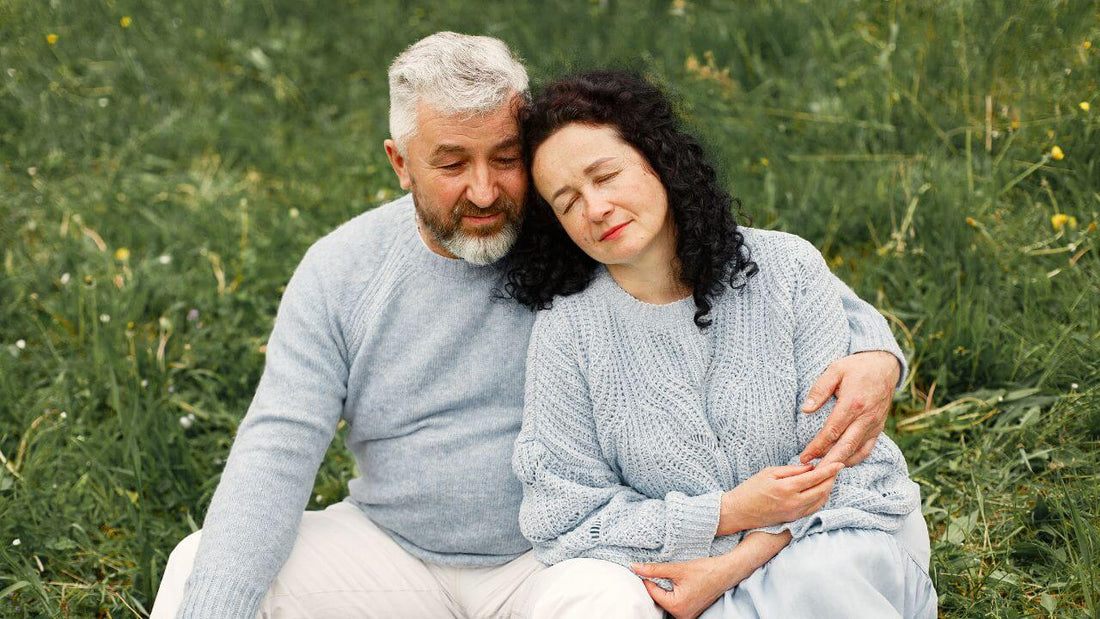
Could Earthing Help You Age Better?
Denzel SueltoEveryone wants to live a long and healthy life. As we age, our bodies face increasing wear and tear: chronic inflammation, slower recovery, higher risk of heart disease, and poorer sleep quality are common issues in older adults. Scientists even use the term “inflamm-aging” to describe how persistent, low-level inflammation accelerates aging and degenerative diseases.
What if a simple habit like walking barefoot on the Earth could help combat some of these aging factors? Grounding (earthing) – the practice of reconnecting physically with the Earth’s electrons – has been studied for its potential health benefits. Research suggests that grounding can reduce inflammation and improve blood properties related to circulation.
In this article, we'll see how earthing might contribute to longevity and healthier aging, from reducing cardiovascular risks to enhancing sleep and stress resilience.
Fighting Inflammation – The Key to Ageing Better
Chronic inflammation is a driving factor in many age-related conditions, from arthritis and heart disease to diabetes and Alzheimer’s. Grounding may offer a natural way to help keep inflammation in check.
A comprehensive review of grounding research noted significant effects on markers of inflammation and immune response. In grounded individuals, studies have found fewer signs of persistent inflammation and faster resolution of acute inflammation. For example, people who were grounded during experiments showed reductions in inflammatory cytokines and less swelling and pain after injuries compared to those not grounded.
By continuously supplying the body with electrons from the Earth, earthing is thought to neutralise excess free radicals and prevent them from fueling inflammation-related ageing damage. Some scientists have even hypothesised that many chronic diseases of ageing share a common root in chronic inflammation and stress, worsened by modern lifestyles that disconnect us from nature.
If so, regular grounding – a simple reconnection with nature – might address that root cause and slow down the progression of inflammatory ageing processes.
Cardiovascular Health and Blood Flow
| Study | Subjects | Grounding Method | Key Numerical Findings | What It Means |
|---|---|---|---|---|
| Chevalier et al. (2013) | 10 healthy adults | Conductive patches on palms and soles for 2 hours | Average increase in RBC zeta potential: +2.70 units; significant reduction in blood viscosity and RBC clumping | Grounding made blood less sticky, improving circulation and lowering clot risk |
| Brown & Chevalier (2015) | 28 healthy adults (grounded vs. sham) | 1 hour of yoga on a grounded mat | Systolic viscosity decreased (p = 0.032); Diastolic viscosity decreased (p = 0.031) | Grounding during exercise improved blood flow and reduced thickness |
| Chevalier et al. (2006) | 58 participants (22 grounded, 30 control) | Conductive patch on sole during biofeedback | BVP decreased in 86.4% (19/22) grounded participants (p < 0.001) vs. 32% (8/25) in control group | Grounding quickly lowered physiological stress, benefiting cardiovascular health |
Heart disease is a leading cause of death as we age. A major contributor is blood viscosity (thickness) – thicker blood can increase blood pressure and clot risk. Remarkably, grounding has been shown to improve blood flow properties. In 2013, researchers reported that grounding the human body for two hours significantly reduced blood viscosity and clumping of red blood cells.
Essentially, earthing made the blood less “sticky.” Thinner blood flows more easily, delivering oxygen and nutrients more efficiently and reducing strain on the heart. Improved circulation also helps prevent deep vein thrombosis and other clot-related issues that become more common with age.
Additionally, grounded subjects in studies have exhibited improved heart rate variability (an indicator of cardiovascular health and stress adaptability), suggesting earthing supports a balanced autonomic nervous system. Together, these effects – better blood rheology and nervous system balance – align with factors that promote longevity by protecting the cardiovascular system.
Sleep, Stress, and Cellular Restoration
Longevity isn’t just about avoiding diseases; it’s also about maintaining vitality. Good sleep and low chronic stress are critical for healthy aging. Grounding has promising effects on both. Older adults often experience fragmented sleep or insomnia.
One study found that people who slept while grounded fell asleep more quickly, slept more deeply, and woke up less throughout the night. Importantly, their cortisol (stress hormone) levels at night decreased significantly, indicating a deeper state of rest. Quality sleep is when the body performs cellular “housekeeping” – repairing DNA, clearing out waste (like in the brain during deep sleep), and regenerating tissues. By improving sleep, grounding indirectly supports these regenerative processes that keep us youthful.
Chronic stress accelerates aging by wearing down organs and even shortening telomeres (the protective end-caps of chromosomes). Grounding appears to reduce stress and its physiological impacts. In clinical tests, grounded subjects displayed brainwave and muscle tension changes consistent with relaxation, accompanied by a subjective sense of calm.
Lower baseline stress means less cortisol and adrenaline bathing our cells, which over years can translate to lower risk of conditions like hypertension, cognitive decline, and insulin resistance. A 2011 editorial on chronic disease hypothesised that lack of contact with the Earth might be an unrecognised factor contributing to the stress load in modern life. Re-establishing that contact through earthing could thus be a simple strategy to enhance our built-in anti-stress systems as we age.
Conclusion
Ageing is a complex process, but managing inflammation, circulation, and stress are three pillars of healthy ageing. Grounding provides a straightforward, natural method that appears to benefit all three. Scientific studies have documented earthing’s ability to reduce inflammation, improve blood fluidity, and calm the nervous system. These effects line up closely with what gerontologists advise for longevity.
Grounding won’t stop the clock, but it may help minimise wear on our bodies and preserve function longer. Best of all, it’s accessible and free – requiring nothing more than time and bare skin on the Earth. As research continues, earthing could become a useful addition to one’s healthy ageing toolkit. In the quest to live not just longer but better, the simple act of staying connected to the Earth might help us age grounded in good health.
If you want to make it part of your daily routine without worrying about weather or outdoor access, we offer high-quality grounding products at Premium Grounding that make it easy to stay connected indoors. In the quest to live not just longer but better, the simple act of staying connected to the Earth might help us age grounded in good health.
References
- Chevalier, G., Sinatra, S. T., Oschman, J. L., Sokal, K., & Sokal, P. (2012). Earthing: Health implications of reconnecting the human body to the Earth’s surface electrons. Journal of Environmental and Public Health, 2012, Article ID 291541. DOI: 10.1155/2012/291541
- Chevalier, G., Sinatra, S. T., Oschman, J. L., & Delany, R. M. (2013). Earthing (grounding) the human body reduces blood viscosity—a major factor in cardiovascular disease. Journal of Alternative and Complementary Medicine, 19(2), 102–110. DOI: 10.1089/acm.2011.0820
- Oschman, J. L., Chevalier, G., & Brown, R. (2015). The effects of grounding (earthing) on inflammation, the immune response, wound healing, and prevention and treatment of chronic inflammatory and autoimmune diseases. Journal of Inflammation Research, 8, 83–96. DOI: 10.2147/JIR.S69656










